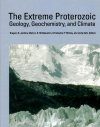About this book
Earth climate is uniquely determined at any time by the varied interactions of its components: lithosphere, biosphere, atmosphere, hydrosphere (ocean, lakes and rivers) and cryosphere. Over the past 544 million years (the Phanerozoic Eon), these components of the climate system have undergone significant changes but perhaps none more extreme than in the Proterozoic Era (2.5 G-544 Ma) With at least three periods with low-latitude glacial deposits (during the Palaeoproterozoic and Neoproterozoic), the cryosphere may have dominated the earth's surface, possibly the only such event in earth's history. Indeed, if the Earth had an obliquity similar to the present (23.45°), then low-latitude glaciation could represent a nearly ice- and snow-covered globe. Effects would have been multiform: The influence of the hydrosphere would have been at a minimum and most living organisms would have been confined to small areas of open ocean if they existed at all, or possibly near hydrothermal vents. The atmosphere would have been very dry and nearly cloud-free.
Contents
Preface
Gregory S. Jenkins, Mark A. S. McMenamin, Christopher McKay, and Linda Sohl vii
Introduction: The Proterozoic
Gregory S. Jenkins, Christopher McKay, and Mark A. S. McMenamin 1
Observations of Extreme Proterozoic Conditions
Paleomagnetic Constraints on Neoproterozoic 'Snowball Earth' Continental Reconstructions
Joseph G. Meert and Trond. H. Torsvik 5
Geochemical Climate Proxies Applied to the Neoproterozoic Glacial Succession on the Yangtze Platform, South China
Nicole Dobrzinski, Heinrich Bah I burg, Harald Strauss, and Qirui Zhang 13
Formerly-Aragonite Seafloor Fans from Neoproterozoic Strata, Death Valley and Southeastern Idaho, United States: Implications for "Cap Carbonate" Formation and Snowball Earth
Frank A. Corsetti, Nathaniel J. Lorentz, and Sara B. Pruss 33
Modeling Extreme Proterozoic Conditions
Analysis of Carbon Cycle System During the Neoproterozoic: Implications for Snowball Earth Events
Eiichi Tajika 45
Secular Changes in the Importance of Neritic Carbonate Deposition as a Control on the Magnitude and Stability of Neoproterozoic Ice Ages
Andy Ridgwell and Martin Kennedy 55
A Review of Neoproterozoic Climate Modeling Studies
Gregory S. Jenkins 73
Global Tectonic Setting and Climate of the Late Neoproterozoic: A Climate-Geochemical Coupled Study
Yannick Donnadieu, Gilles Ramstein, Yves Godderis, and Frederic Fluteau 79
Climate-Ice Sheet Simulations of Neoproterozoic Glaciation Before and After Collapse to Snowball Earth
David Pollard and James F. Kasting 91
Climate Dynamics in Deep Time: Modeling the "Snowball Bifurcation" and Assessing the Plausibility of its Occurrence
W. R. Peltier, L. Tarasov, G. Vettoretti, and L. R Solheim 107
Synthesis: Hypothesis and Processes That Explain Extreme Proterozoic Climate
Interpreting the Neoproterozoic Glacial Record: The Importance of Tectonics
Nicholas Eyles and Nicole Januszczak 125
Neoproterozoic Glaciation: Reconciling Low Paleolatitudes and the Geologic Record
George E. Williams and Phillip W. Schmidt 145
Earth's Earliest Extensive Glaciations: Tectonic Setting and Stratigraphic Context of Paleoproterozoic Glaciogenic Deposits
Grant M. Young 161
High Obliquity as an Alternative Hypothesis to Early and Late Proterozoic Extreme Climate Conditions
Gregory S. Jenkins 183
Thin Ice on the Snowball Earth
Christopher P. Mckay 193
Biological Aspects of Neoproterozoic Glaciation and its Implications for the Cambrian Explosion
Neoproterozoic Glaciations and the Fossil Record
Shuhia Xiao 199
Climate, Paleoecology and Abrupt Change During the Late Proterozoic: A Consideration of Causes and Effects
Mark A. S. McMenamin 215
Customer Reviews







































